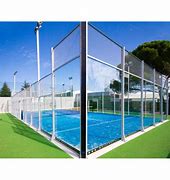

Exploring the Rise of Racquetball in China
Racquetball, a sport that combines elements of squash and handball, has seen a surprising yet steady rise in popularity across China in recent years. Although often overshadowed by more traditional sports such as basketball, table tennis, and badminton, racquetball is slowly carving out a niche for itself among sports enthusiasts in urban areas. This article delves into the factors contributing to the emergence of racquetball in China, the challenges it faces, and its potential for growth in the future.
Historical Context
Racquetball originated in the United States in the 1960s and has primarily been popular in North America. It is a fast-paced game played on a four-walled court where two players, or doubles teams, hit a small rubber ball with their racquets. The objective is simple players must strike the ball in a way that the opponent is unable to return it. In China, however, the sport is relatively new, with its introduction occurring in the late 20th century. Since then, it has gradually gained traction, especially in metropolitan areas where access to facilities that support a variety of sports is more widely available.
Factors Driving Popularity
One of the primary factors contributing to the rise of racquetball in China is the growing trend towards health and fitness among the middle class. With increasing awareness of the importance of physical activity and a balanced lifestyle, many individuals are seeking out diverse and engaging ways to exercise. Racquetball provides a high-intensity cardiovascular workout that is both fun and challenging. Additionally, the rapid pace of the game requires agility, strategic thinking, and quick reflexes, making it an excellent choice for those looking to enhance their physical fitness.
Another significant factor is the influence of international sports culture. As China becomes increasingly interconnected with the global community, exposure to various sports, including racquetball, has expanded via media, travel, and international competitions. Local clubs and sporting goods stores are beginning to promote racquetball, offering lessons and equipment to attract newcomers. This visibility is critical for motivating young people to participate in racquet sports.
The Role of Sports Facilities
Access to sports facilities also plays a crucial role in the sport's growth. As urban development continues to expand in China, there has been a concerted effort to build recreational centers and sports complexes equipped with racquetball courts. These facilities not only provide a space for enthusiasts to play but also host tournaments, clinics, and social events that foster a sense of community among players. The establishment of racquetball associations and clubs has helped to formalize the sport, providing structured opportunities for competition and skill development.

Challenges Ahead
Despite its growing popularity, racquetball faces several challenges in China. One of the main hurdles is the lack of awareness and understanding of the sport. Compared to basketball or soccer, racquetball is still relatively unknown among the general populace. Many individuals may not even recognize it as a legitimate sport, limiting its appeal. Overcoming this perception requires dedicated marketing efforts, educational programs, and outreach initiatives to engage potential players and enthusiasts.
Additionally, there is stiff competition from other racquet sports, particularly badminton and squash, which hold more significant cultural significance and are more widely played. Promoting racquetball as a complementary sport rather than a competing entity could be one approach to encourage players to try something new.
The Future of Racquetball in China
Looking ahead, the future of racquetball in China appears promising. With increasing health consciousness among the population and greater exposure to the sport through organized events, interest is likely to continue to grow. As local clubs and associations work to enhance the visibility of racquetball, more players may be drawn to its unique combination of athleticism and strategy.
Furthermore, partnerships with schools and universities can be instrumental in introducing racquetball to younger generations, fostering a new wave of players who can carry the sport forward. With time and commitment, racquetball could very well establish itself as a prominent sport within China's diverse athletic landscape.
Conclusion
In summary, racquetball is on an upward trajectory in China, fueled by health trends, sports facility development, and community engagement. However, it must overcome challenges related to awareness and competition with other sports. With continued effort and passionate advocacy, racquetball has the potential to become a favored sport for many in the years to come. As more Chinese players pick up a racquet, the sport could soon find its place in the hearts of athletes across the nation.
High-Performance Industrial Flooring Solutions China Paddle Tennis Court for Sale
High-Performance Industrial Flooring Solutions Durable & Cost-Effective
Homogeneous Transparent Floor – Durable & Stylish Rubber Floor Solutions
Premium Homogeneous Transparent Floor for Durable & Stylish Spaces Rubber Floor Solutions
Premium Sports Floor Solutions Durable PVC Sports Floor & Rubber Floor for Gyms
Durable Rubber Composite Floor Premium Rubber Floor & Mats Solutions